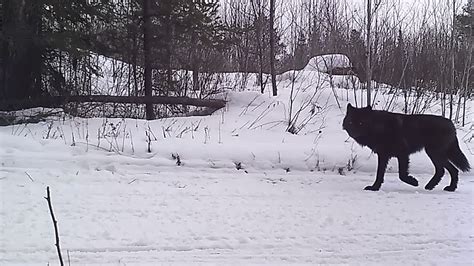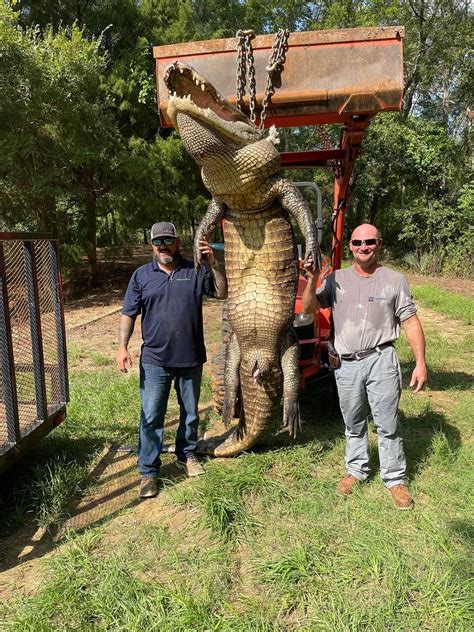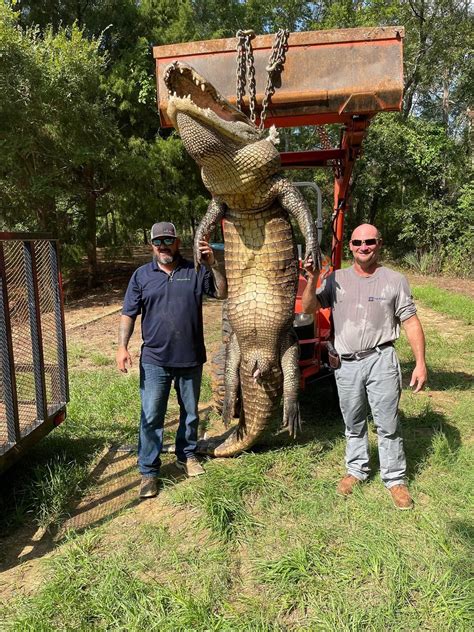
A remote trail camera in northeastern Oregon has captured remarkable footage of a wolf pack exhibiting unusually cooperative behavior, showcasing adults teaching pups hunting strategies, a sight rarely documented in the wild.
NORTHEASTERN OREGON – Wildlife biologists are abuzz over extraordinary footage captured by remote trail cameras in the rugged terrain of northeastern Oregon, revealing unprecedented insights into the complex social dynamics and cooperative hunting strategies of a wolf pack. The footage, released this week, documents adult wolves meticulously instructing their pups on the finer points of hunting, offering a rare glimpse into the educational processes within these apex predators’ family structures.
The Oregon Department of Fish and Wildlife (ODFW) confirmed the authenticity of the footage, hailing it as a significant contribution to the understanding of wolf behavior. “This is truly a remarkable observation,” stated Dr. Sarah Hendricks, lead researcher at ODFW’s wolf management program. “To witness such clear evidence of adults actively teaching hunting techniques to their offspring is something we rarely get to see. It highlights the intricate social bonds and intelligence of these animals.”
The footage shows several adult wolves guiding pups through simulated hunting scenarios. In one scene, an adult is seen carefully positioning a young pup to stalk a simulated prey item, believed to be a log or rock representing a deer or elk. Another clip features an adult demonstrating the proper method of ambushing prey from behind cover, while yet another showcases the pack coordinating a mock chase, teaching the pups how to effectively work together to isolate and pursue a target.
“Wolves are highly intelligent and social animals,” Dr. Hendricks explained. “We’ve long known that they operate in complex social structures, but this footage provides concrete evidence of the active role adults play in the education and skill development of their young. It’s not just about providing food; it’s about passing on essential survival skills.”
The location of the trail cameras remains confidential to protect the wolf pack from potential human interference. The area is known to be a prime habitat for wolves, offering ample prey and relatively undisturbed wilderness. However, the ODFW emphasizes the importance of responsible wildlife viewing and maintaining a safe distance from these animals.
The discovery comes at a time when wolf populations in Oregon and across the western United States are a subject of ongoing debate and conservation efforts. While wolf numbers have steadily increased since their reintroduction in the late 1990s, they continue to face threats from habitat loss, human-wildlife conflict, and hunting. The ODFW is actively involved in managing wolf populations, balancing conservation goals with the needs of livestock owners and rural communities.
“Understanding wolf behavior is crucial for effective management and conservation,” Dr. Hendricks stated. “The more we learn about their social dynamics, hunting strategies, and habitat requirements, the better equipped we are to develop strategies that promote coexistence between wolves and humans.”
The footage has also generated significant interest within the scientific community, with researchers eager to analyze the data and gain further insights into wolf behavior. Dr. Emily Carter, a wolf ecologist at the University of Montana, described the footage as “a goldmine of information.” “This provides invaluable data on how wolves learn and adapt to their environment,” she said. “It could help us understand how wolf packs respond to changes in prey availability, habitat fragmentation, and other environmental challenges.”
The ODFW plans to continue monitoring the wolf pack using remote trail cameras and other tracking methods. They hope to document further instances of cooperative behavior and gain a more comprehensive understanding of the pack’s dynamics. The data collected will be used to inform management decisions and develop strategies that promote the long-term conservation of wolves in Oregon.
The incident has sparked a renewed appreciation for the intelligence and adaptability of wolves, highlighting their vital role in maintaining healthy ecosystems. As apex predators, wolves help regulate populations of deer, elk, and other herbivores, preventing overgrazing and promoting biodiversity. Their presence can also benefit other wildlife species by creating scavenging opportunities and altering the behavior of prey animals.
The discovery of this rare pack footage underscores the importance of continued research and monitoring efforts to understand and protect these iconic animals. By learning more about wolf behavior and ecology, we can develop more effective strategies for coexistence and ensure that these magnificent creatures continue to thrive in the wild. The ODFW is urging the public to report any wolf sightings and to support conservation efforts aimed at protecting wolf habitat.
The captivating footage has also drawn attention to the broader issue of wildlife conservation and the need to protect natural habitats. As human populations continue to grow and encroach upon wild lands, it becomes increasingly important to manage human-wildlife conflict and ensure that animals like wolves have the space and resources they need to survive. The ODFW is working with landowners, conservation organizations, and other stakeholders to promote responsible land management practices that benefit both wildlife and human communities.
The unprecedented glimpse into the educational world of wolves serves as a powerful reminder of the interconnectedness of life and the importance of preserving biodiversity for future generations. It highlights the need for continued research, monitoring, and conservation efforts to ensure that these magnificent creatures continue to roam the wild landscapes of Oregon and beyond. The ODFW encourages anyone interested in learning more about wolves and conservation efforts to visit their website or contact their local office.
The recent footage also comes at a critical juncture in the ongoing debate over wolf management in the western United States. Several states have recently relaxed protections for wolves, allowing for increased hunting and trapping. Conservation groups have challenged these decisions in court, arguing that they could jeopardize wolf populations and undermine years of conservation efforts. The ODFW is committed to managing wolf populations responsibly, balancing the needs of wolves with the concerns of local communities.
“We recognize that wolves are a controversial species,” Dr. Hendricks acknowledged. “But we believe that it is possible to manage wolf populations in a way that allows them to thrive while also addressing the concerns of livestock owners and other stakeholders. We are committed to working collaboratively with all parties to find solutions that work for everyone.”
The discovery of this rare pack footage underscores the importance of relying on scientific data and evidence-based decision-making when it comes to wildlife management. By understanding wolf behavior and ecology, we can develop more effective strategies for conservation and coexistence. The ODFW is committed to continuing its research and monitoring efforts to inform management decisions and ensure the long-term sustainability of wolf populations in Oregon.
The incredible footage has also ignited a new wave of public interest in wolves and their conservation. Social media platforms have been flooded with shares and comments, with many people expressing their admiration for these intelligent and social animals. The ODFW hopes to capitalize on this public interest by promoting educational programs and outreach initiatives that teach people about wolves and their role in the ecosystem.
“We believe that education is key to fostering coexistence between wolves and humans,” Dr. Hendricks said. “The more people understand about wolves, the more likely they are to support conservation efforts and to take steps to minimize conflict. We are committed to providing accurate and informative resources to the public and to engaging in open and transparent dialogue about wolf management.”
The ODFW is also working with landowners to implement non-lethal methods of preventing wolf depredation on livestock. These methods include using guard dogs, fencing, and fladry (flags attached to fencing) to deter wolves from approaching livestock. The ODFW provides technical assistance and financial incentives to landowners who implement these methods.
The discovery of this rare pack footage serves as a testament to the power of technology to reveal new insights into the natural world. Remote trail cameras have become an indispensable tool for wildlife biologists, allowing them to monitor animal populations, track their movements, and study their behavior without disturbing them. The ODFW relies heavily on trail cameras to monitor wolf populations and to gather data on their distribution, abundance, and habitat use.
The ODFW is also using GPS collars to track the movements of individual wolves. These collars provide valuable data on wolf pack territories, dispersal patterns, and interactions with other wildlife species. The data collected from GPS collars is used to inform management decisions and to assess the effectiveness of conservation efforts.
The incredible footage captured in northeastern Oregon highlights the importance of protecting wilderness areas and maintaining healthy ecosystems. Wolves require large, intact habitats with abundant prey and minimal human disturbance. The ODFW is working to conserve and restore wolf habitat through a variety of strategies, including protecting key habitat areas, managing forest health, and controlling invasive species.
The ODFW is also working to promote responsible recreation in wolf habitat. They encourage hikers, hunters, and other outdoor enthusiasts to be aware of their surroundings and to take steps to minimize their impact on wildlife. This includes staying on marked trails, keeping dogs leashed, and avoiding areas known to be used by wolves.
The discovery of this rare pack footage underscores the importance of ongoing collaboration between government agencies, conservation organizations, and local communities. By working together, we can develop effective strategies for managing wolf populations and promoting coexistence between wolves and humans. The ODFW is committed to fostering strong partnerships with all stakeholders to ensure the long-term sustainability of wolf populations in Oregon.
The ODFW also acknowledges the importance of addressing the concerns of livestock owners who may be affected by wolf depredation. They provide compensation to livestock owners for confirmed losses due to wolves and work to implement non-lethal methods of preventing depredation. The ODFW is committed to finding solutions that work for both wolves and livestock owners.
The incredible footage captured in northeastern Oregon is a reminder of the beauty and complexity of the natural world. It highlights the importance of continued research, monitoring, and conservation efforts to understand and protect these magnificent creatures. The ODFW encourages everyone to learn more about wolves and their role in the ecosystem and to support conservation efforts aimed at ensuring their long-term survival. The department is currently developing new educational materials and outreach programs that will be available to the public in the coming months. These resources will provide information on wolf biology, behavior, and management, as well as tips for minimizing conflict between wolves and humans. The ODFW also plans to host a series of public forums and workshops to discuss wolf management issues and to gather input from stakeholders.
The ODFW emphasizes that wolf management is a complex and challenging issue that requires a balanced approach. They are committed to considering all perspectives and to making decisions based on the best available science. The ODFW believes that it is possible to manage wolf populations in a way that allows them to thrive while also addressing the concerns of local communities.
The discovery of this rare pack footage is a cause for celebration, but it is also a reminder of the challenges that wolves face in the 21st century. Habitat loss, human-wildlife conflict, and climate change are all threats to wolf populations around the world. The ODFW is committed to working to address these challenges and to ensure that wolves continue to roam the wild landscapes of Oregon for generations to come.
The release of the footage has also prompted discussions about the ethical considerations of using trail cameras to monitor wildlife. While trail cameras can provide valuable data on animal behavior, some people worry that they may be intrusive or that they could be used to harass or harm wildlife. The ODFW has strict guidelines in place to ensure that trail cameras are used responsibly and ethically. They require researchers to obtain permits before deploying trail cameras and to avoid placing cameras in areas where they could disturb sensitive wildlife habitats. The ODFW also prohibits the use of trail cameras to harass or harm wildlife.
The ODFW is committed to using trail cameras and other monitoring technologies in a responsible and ethical manner. They believe that these technologies can play a vital role in wildlife conservation, but they also recognize the importance of protecting the privacy and well-being of animals.
The discovery of this rare pack footage is a testament to the dedication and expertise of the wildlife biologists who work to protect wolves and other wildlife species in Oregon. The ODFW employs a team of highly trained professionals who are passionate about conservation and who are committed to using the best available science to manage wildlife populations.
The ODFW also relies on the support of volunteers who assist with a variety of tasks, including monitoring wolf populations, conducting habitat surveys, and educating the public about wildlife conservation. The ODFW is grateful for the contributions of its volunteers and encourages anyone who is interested in getting involved to contact their local office.
The incredible footage captured in northeastern Oregon is a reminder of the importance of supporting wildlife conservation efforts. By donating to conservation organizations, volunteering your time, or simply educating yourself about wildlife issues, you can help to protect wolves and other wildlife species for future generations.
The ODFW encourages everyone to visit their website to learn more about wolves and other wildlife species in Oregon. The website provides information on wolf biology, behavior, and management, as well as tips for minimizing conflict between wolves and humans. The ODFW also maintains a social media presence where they share updates on their conservation efforts and provide information about wildlife events and activities.
The discovery of this rare pack footage is a cause for hope and inspiration. It is a reminder that even in the face of numerous challenges, wolves can thrive and that humans and wolves can coexist. The ODFW is committed to working to make that vision a reality.
FAQ Section:
Frequently Asked Questions About the Oregon Wolf Pack Footage
-
What exactly does the trail camera footage show?
- The footage shows adult wolves in northeastern Oregon actively teaching their pups how to hunt. This includes demonstrations of stalking, ambushing, and coordinated chasing techniques. The adults appear to be guiding the pups through simulated hunting scenarios, using logs or rocks as stand-ins for prey animals like deer or elk.
-
Where was the footage taken, and why is the exact location being kept secret?
- The footage was taken in a remote area of northeastern Oregon. The exact location is being kept confidential to protect the wolf pack from potential human interference, including harassment or poaching. This is standard practice in wildlife management to ensure the safety and well-being of vulnerable species.
-
Why is this footage considered so unusual or rare?
- Documenting adult wolves actively teaching their pups hunting strategies is extremely rare. While it’s known that wolves have complex social structures and that adults provide for their young, capturing clear visual evidence of this kind of instruction is uncommon. Most observations are indirect; this footage offers a direct, visual confirmation of the learning process.
-
What is the Oregon Department of Fish and Wildlife (ODFW) doing with this information?
- The ODFW is using the footage to gain a better understanding of wolf behavior, social dynamics, and hunting strategies. This information will be used to inform management decisions and develop strategies for promoting coexistence between wolves and humans. The ODFW also hopes to continue monitoring the pack to document further instances of cooperative behavior.
-
How does this discovery impact wolf management and conservation efforts in Oregon?
- This discovery underscores the importance of relying on scientific data when making decisions about wolf management. Understanding how wolves learn and adapt can help develop more effective strategies for conservation and coexistence. It reinforces the need for continued research, monitoring, and public education to support the long-term survival of wolves in Oregon. Further, it promotes the use of non-lethal methods to prevent wolf depredation on livestock, such as using guard dogs or fencing, to find solutions that work for both wolves and livestock owners.









